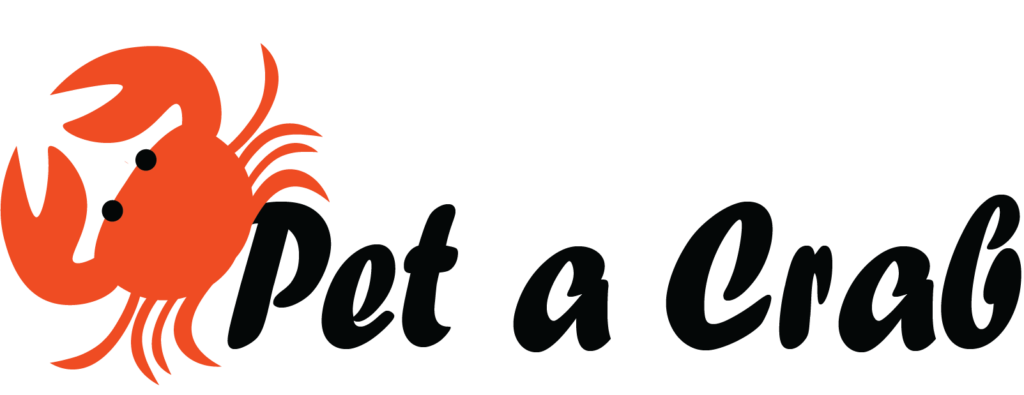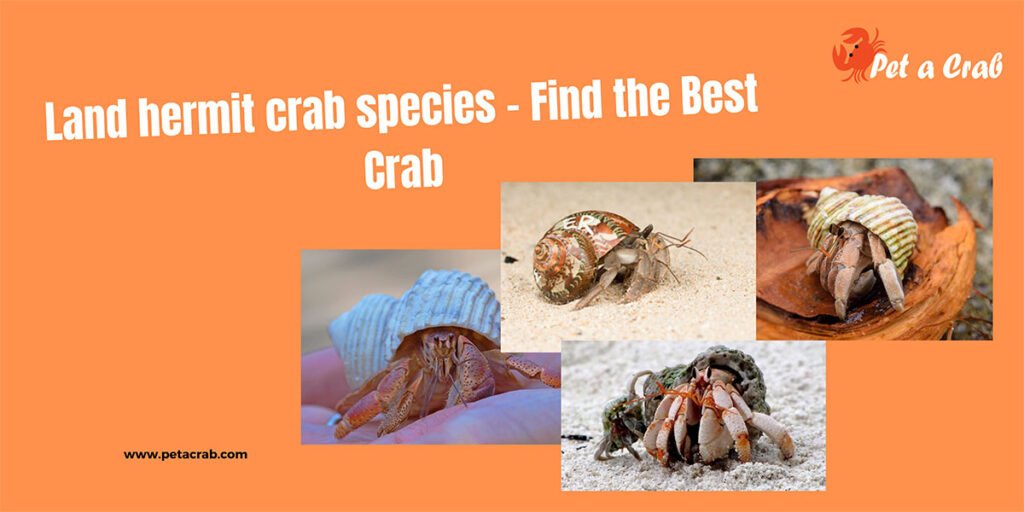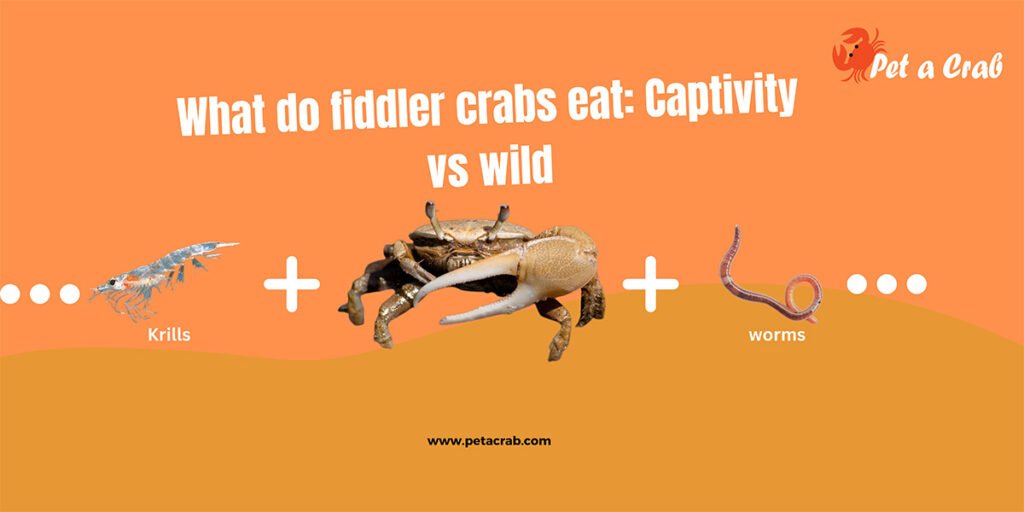The Halloween hermit crab is one of the more colourful janitorial crabs and has bright orange legs with red striping. Usually, they are found mainly off the coast of Hawaii. Typically, they grow to a maximum of two inches. Like the other crabs, they are an incredibly beneficial organism to have in the tank, as they are generally clean and tidy. Besides, they make an excellent addition to your reef aquarium.
If you already have a striped hermit crab, you must know something already. But if you do not own any cone shell hermit crabs but want to get one, read below for more information.
Scientific Classification of Halloween Hermit Crab
- Kingdom: Animalia
- Specific Name: Ciliopagurus strigatus
- Phylum: Arthropoda
- Class: Malacostraca
- Order: Decapoda
- Family: Diogenidae
- Genus: Ciliopagaurus
- Species: C.strigatus
Quick Fact About Halloween Hermit Crab
- Minimum Tank Size: 15 gallons (60 liters)
- Keeping: Very easy
- Breeding: Difficult
- Optimal pH: 8.0 – 8.5
- Optimal gH: 8-16
- Size: Up to 5 cm (2 inches)
- Nitrate: Less than 20 ppm
- Diet: Omnivore
- Temperament: Peaceful
- Care Level: Easy
- Colour Form: Orange and red
- Reef Compatible: Yes
- Life Span: Up to 8 years
- Other Names: Cone Shell Hermit Crab, The Orange Legged Hermit, Cancer Strigatus, Aniculus Strigatus, Pagurus Strigatus, The Striped Hermit Crab, Trizopagurus Strigatus

Key Features of Halloween Hermit Crab
- Essential Tank Cleaners – Striped hermit crabs are diligent tank cleaners beyond their festive attire. They are combing the tank floor by eating food scraps, algae and trash. This can help contribute to a cleaner and healthier environment.
- Ideal For Reef and Nano Tanks – They are ideal for nano and reef tanks with a range in size from 1 to 2 inches. However, Halloween crab’s size is manageable, which makes them a versatile addition to various setups.
- Striking Halloween Colors – These hermit crabs boast a spooky, eye-catching appearance with a Halloween costume of orange and black. Besides, their vibrant colours add a touch of festivity to your underwater landscape
- Reef-safe – Usually, these crabs are very well known for their reef-safe behaviour. Also, they coexist peacefully with corals and other invertebrates. In addition, their social nature adds an entertaining environment to your aquarium community.
Discover The Amazing Halloween Hermit Crab’s Fact
Habitat and Adaptability
Usually, these crabs are native to the Indo-Pacific region. Besides, they inhabit coral reefs and other sandy substrates. Whatever, their striking appearance features a vibrant orange leg and a reddish brown shell. This can help add an extra touch to your aquatic environment. In addition, cone-shell hermit crabs are very well known for their various environments and adaptability. This makes them popular in marine aquariums.
Temperament
Among the other crabs, striped hermit crabs are very opportunistic feeders. Usually, they are like a bull in a china shop. Typically, they live in empty shells left behind by other invertebrates. To steel their shell, they have been known to prey on other hermit crabs.

Behavior
Orange-legged hermit crabs are nocturnal creatures. Typically, they can rest during the day and come out at night. In general, they are always searching for food because of their active nature. Whatever, they spend a lot of time inside the shell without any movement.
Reef Safety and Compatibility
Fortunately, Halloween crabs are reef-safe which means they do not harm coral or other invertebrates. Besides, they play an essential role in the ecosystem by scavenging detritus and contributing to clean and healthier aquariums.
Diet and Feeding
Halloween hermit crabs are typically omnivores with a variety of diets. So, feeding them is very easy. Usually, they eat algae, small food particles and detritus, which can make them effective scavengers. Besides, they eat anything they can find in the tank.
Size and Lifespan
Typically, these hermit crabs reach sizes of about 1 to 2 inches in length. Whether they can have a long time lifespan of about 8 years or more. This can help to ensure their long-term presence in your marine aquarium.
Malting
Like all other crabs, they are required to moult at regular intervals. This can help it grow in size. During this season, they will try to hide until they get the new shell. In addition, after every malt, they will need larger shells.
Breeding
When reproducing, male Halloween crabs can detect female crabs when they are fertile. After detection, male crabs attach themselves until the eggs are fertilised.
Tank Requirements
A minimum tank size of 10 gallons is recommended for your Halloween crabs. Also, ensure that you are providing ample hiding places to mimic their natural environment. Besides, a sandy substrate is also recommended for them. Because it allows them to burrow and sift through detritus.
Optimal Water Conditions
Usually, it is very crucial to maintain a precise water condition for their health. Below are some factors about water conditions that you need to follow:
- Maintaining a stable pH level that is 8.0 to 8.4.
- Keep the salinity of your aquarium water at 1.024 to 1.026 and the specific gravity at 32 to 35 ppt.
- Also maintaining a water temperature that is 74°F to 78°F.
- Generally, these crab species do not have any specific lighting requirements, but low-intensity lighting is suitable for them.
- To prevent sediment buildup, ensure gentle to moderate water flow within the tank.

How To Care For Halloween Hermit Crabs
Whether you have an orange-legged hermit crab but do not know how to care for these species, these care instructions are only for you.
Tank Compatibility
With ample hiding spots and a stable environment, providing a well-established reef aquarium is very essential for these crabs. But ensure a temperature range between 72 and 78 degrees Fahrenheit, as well as a salinity level of 1.023 to 1.025.
Dietary Variety
Typically, these crabs are omnivores and offer a diverse diet. This diet includes algae, small meaty foods, seaweed and specially formulated crab food that meets nutritional needs.
Shells and Substrate
To care for your hermit crabs, ensure a sandy substrate. Besides, offer a selection of empty shells to choose from as they grow. However, as part of their natural behaviour, they frequently change shells.
Frequently Asked Questions
How often do I feed Halloween crabs?
You can feed your hermit crabs once or twice a week. For example, you can feed them silver sides, clams, raw table shrimp, scallops and algae. While there is no algae in your tank, feed them algae tablets.
Is the Halloween crab’s reef safe?
Absolutely yes, they are reef-safe. Because of their size, you should not worry about them eating your corals. However, they can accidentally knock on them.
Why is it called a Halloween hermit crab?
They are called Halloween crabs because of their brilliant colour.
Related article – Zebra hermit crab


